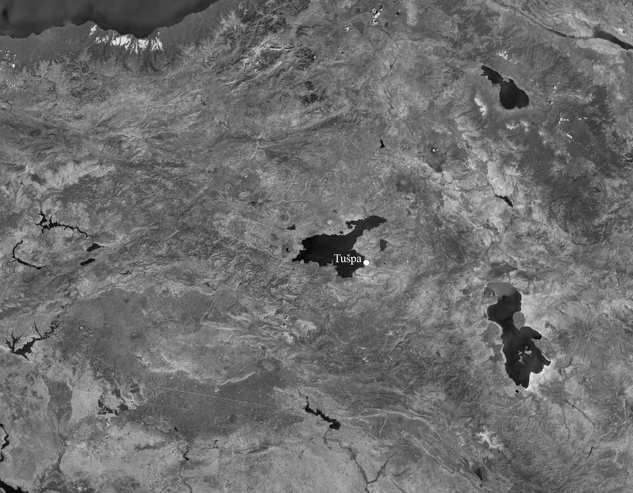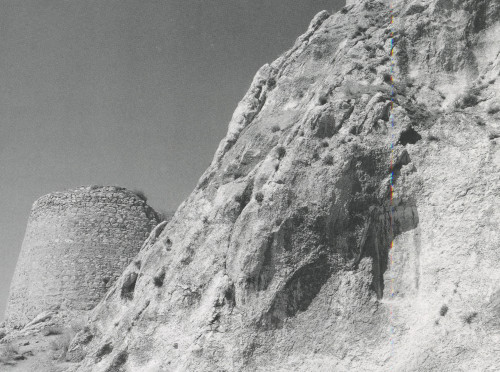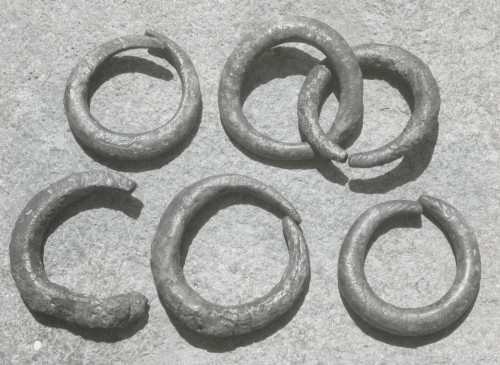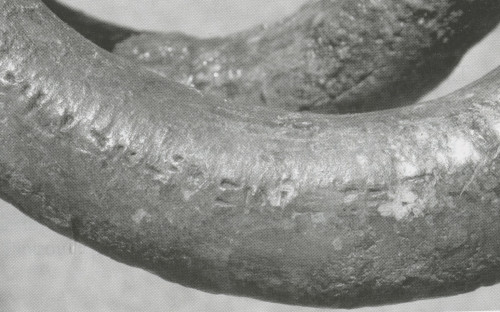Išpuini, Minua, and Inušpua
The inscriptions of Išpuini, Minua, and Minua's son Inušpua include one rock inscription and several texts inscribed on bronze and silver objects.

Map showing the location of the stone inscription of Išpuini, Minua, and Inušpua, in: Mirjo Salvini, CTU I: 176
|
Išpuini / ass. Ušpina Synchronism: ca. 820 BC = 2nd campaign of Šamšī-Adad V |
|
|
Assyrian Sources |
|
|
RIMA 3 A.0.103.1 ii 16b-34a: 2nd campaign led by the chief eunuch Muṭarris-Aššur to the land Nairi conquering of 11 fortified cities as well as 200 other cities of Ušpina |
|
|
Urartian Sources |
|
|
Stone inscriptions |
Inscriptions on metal objects |
|
CTU A 04-01: construction of a tower temple (susi) of the god Haldi and a "Gate of the god Haldi" in the vicinity of Tušpa |
CTU B 04-01 A-D: four bronze rings with Urartian votive inscriptions; provenience: Yukarı Anzaf |
|
|
CTU B 04-02: bronze ring with Urartian inscription; provenience: Yukarı Anzaf |
|
|
CTU B 04-03 a-b: fragments of bronze rings with Urartian inscriptions; provenience: Yukarı Anzaf |
|
Literature: Fuchs 2013: 136 (study and date of Šamši-Adad's V 2nd campaign); Salvini 1995: 34-38 |
|
Royal titles
There are no royal titles given in any of the inscriptions mentioning Išpuini, Minua, and Inušpua.
Building activities
The rock inscription A 4–1, located in Tabriz Kapısı on rock Van, was a transcription of a speech given by Išpuini that reported the erection of a tower temple and a gate for the god Haldi by Minua and Inušpua in or near the city Ṭušpa. Furthermore, the text reports that the erection of these buildings was accompanied by ritual sacrifices.

Rock inscription at Tabrız Kapısı (A 4-1), in: Mirjo Salvini, CTU III: 103
Interestingly, Išpuini is never described as actually having participated in either the building projects or the sacrifices. Apart from his role as the one giving the report, Išpuini is only mentioned as one of the beneficiaries in the blessing formulae, alongside Minua and Inušpua.
Another text that refers to the joint activities of Išpuini, Minua, and Inušpua is the inscription B 4–1 which is engraved on four bronze rings (duplicates A–D). According to this inscription, Išpuini, Minua, and Inušpua dedicated the rings after their conquest of the city Amuša. This military campaign must therefore have taken place in the later years of Išpuini's reign or, respectively, during Išpuini and his son Minua's putative coregency (for further information see the portal page "Išpuini and Minua").

Bronze rings with votive inscription of Išpuini, Minua, and Inušpua from Yukarı Anzaf, in: Mirjo Salvini, CTU IV: 27

Votive inscription of Išpuini, Minua, and Inušpua on bronze rings from Yukarı Anzaf, in: Mirjo Salvini, CTU IV: 27
All these inscriptions suggest that Inušpua, and not his brother Argišti I, was initially intended as Minua's successor. Whether Inušpua ever came into power remains unclear. Except for the inscriptions that mention him with his grandfather and father, he is only mentioned in the dedicatory inscription B 2–4, found on a silver bucket. The text states that Išpuini gave the bucket to Inušpua as a present because of the affection Inušpua had for his grandfather (see portal page Išpuini).
It is therefore likely that Inušpua reigned only for a short period, or that his brother Argišti I immediately followed his father on the throne. The reason for this remains unclear. A struggle for the succession and Inušpua's subsequent murder cannot be excluded. But since no attempts were made to eradicate his name from the inscriptions, thereby erasing him from the collective memory, it appears more likely that he died either before ascending the throne or soon afterwards.
Further reading
Birgit Christiansen
Birgit Christiansen, 'Išpuini, Minua, and Inušpua', Electronic Corpus of Urartian Texts (eCUT) Project, The eCUT Project, a sub-project of MOCCI, 2020 [http://oracc.museum.upenn.edu/ecut/urartianrulersandtheirinscriptions/ishpuiniminuaandinushpuaa4andb4/]